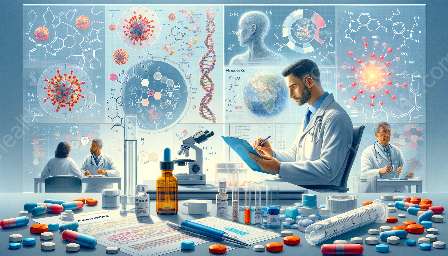In pharmacokinetics, the process of elimination plays a crucial role in determining the duration and intensity of drug action within the body. This comprehensive topic cluster aims to explore the concept of elimination in an attractive and real way, discussing its compatibility with pharmacokinetics and pharmacy.
Understanding Elimination in Pharmacokinetics
Elimination refers to the removal of a drug or its metabolites from the body. It involves processes such as metabolism and excretion, which are essential for maintaining drug concentrations at therapeutic levels while minimizing accumulation and potential toxicity.
Types of Elimination Processes
The two primary processes involved in drug elimination are metabolism and excretion. Metabolism, often carried out by hepatic enzymes, chemically modifies drugs to enhance their excretion. Meanwhile, excretion involves the removal of drug molecules or their metabolites from the body through various routes, such as urine, feces, sweat, and breath.
Factors Affecting Drug Elimination
Several factors influence the rate and efficiency of drug elimination, including hepatic and renal function, age, genetics, and interactions with other drugs. Understanding these factors is crucial for pharmacists and healthcare professionals to optimize drug therapy and minimize the risk of adverse effects.
Role of Elimination in Pharmacy
In the field of pharmacy, a thorough understanding of drug elimination is essential for ensuring safe and effective medication therapy. Pharmacists are responsible for evaluating individual patient factors and adjusting drug regimens to account for variations in drug elimination processes. Additionally, pharmacists play a critical role in educating patients about drug elimination and proper medication use.
Pharmacokinetics and Drug Elimination
Pharmacokinetics, the study of drug movement within the body, closely examines the processes of absorption, distribution, metabolism, and elimination. Understanding the interplay between drug elimination and other pharmacokinetic parameters is vital for predicting drug actions and optimizing therapeutic outcomes.
Challenges and Innovations in Drug Elimination
Advancements in pharmaceutical research have led to the development of novel drug delivery systems and technologies aimed at enhancing drug elimination profiles. From extended-release formulations to targeted drug delivery, these innovations seek to improve drug efficacy and reduce dosing frequency by optimizing drug elimination kinetics.
Conclusion
Elimination is a fundamental aspect of pharmacokinetics and pharmacy, profoundly influencing drug therapy outcomes and patient safety. By delving into the complexities of drug elimination and its compatibility with pharmacokinetics, healthcare professionals and researchers can work towards advancing pharmaceutical care and optimizing medication management.


